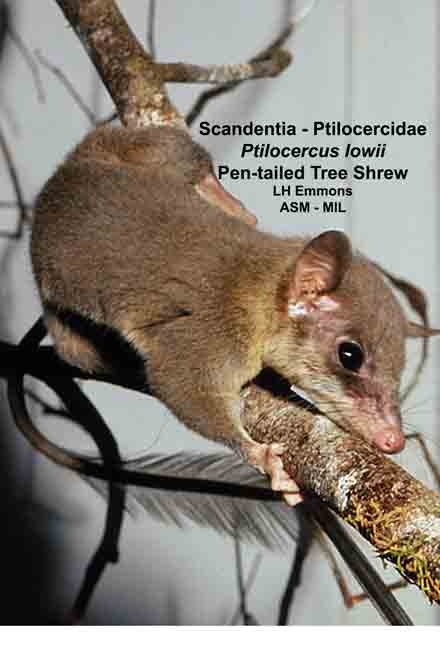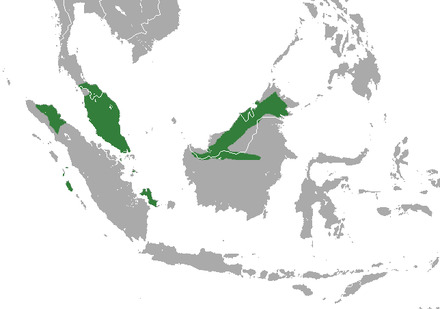#lowii
Explore tagged Tumblr posts
Text

#seedpod#seeds#nature#plants#pitcherplant#pitcherplants#carnivorousplant#carnivorousplants#seed#horticulture#redleafexotics#lowii#arizonacarnivores#plantshelfie#growtentsetups#exoticaplants#carnivorusplant#predatoryplants#venusflytraps#drosera#nepenthes#ventricosa#photography#macrophotography#naturephotography#moody#green#brown
1 note
·
View note
Video
youtube
lets play hyperdimension neptunia rebirth 2 part 7
#youtube#lets play#hyperdimension neptunia rebirth 2#part 7#battle#fight#dungeon#underling#mouse#event#cutscene#leanbox#guardian#lowii#gamingidustry#gameplay#gamergirl#gaming#youtube channel#cosnime
1 note
·
View note
Note
Hi I used your art in my quiz https://www.sporcle.com/games/mayapiecake/k-pop-group-by-fan-art
You are given full credit and I link to the original post but I will remove it if you are uncomfortable!
Oh thats cool :p 💖 all the art on there is rly pretty, im honoured to be featured :3
I tried the quiz and only missed 2 groups which im p happy with considering how shallow my kpop knowledge is lol (while i do listen to a wide variety of groups, my actual knowledge of what any of them look like or how many members they have.. it doesnt extend past sm lmao sorry im an sm girlie... and even within thaf i could not name more than like 5 nct members 😔)
I was basically blind guessing half the groups or working it out by process of elimination xD
#that beinf said i also recognised some of the groups not by the art but by the artist#lowiy i immediately clocked for dreamies <3 i have stickers and keychains from their shop hehehe#and monwillica for shinee :3 yay#but i also found a couple new artists to follow like the boyz one! looks like they have a cool style#anyway thanks for the ask i dont mind you using my art w credit 👍 n fun quiz ^.^#ask#nervousbreakthrough
5 notes
·
View notes
Text
youtube
T-twenty years old?!
#nepenthes#nepenthes lowii#carnivorous plants#carnivourousplant#pitcher plant#pitcher plants#Youtube
1 note
·
View note
Text
Uncharismatic Fact of the Day
Humans have been consuming alcohol for thousands of years, but we're not the only ones with a taste for it! The pen-tailed treeshrew's diet consists almost entirely of naturally fermented nectar, which can have an alcohol content as high as 3.8%. Given their small size, that's the human equivalent of consuming 10-12 glasses of wine. However, this species is able to fully metabolize the alcohol and avoid the intoxicating side-effects.

(Image: A pen-tailed treeshrew (Ptilocercus lowii) by Annette Zitzmann)
If you like what I do, consider buying me a ko-fi!
303 notes
·
View notes
Text
Round 3 - Mammalia - Scandentia




(Sources - 1, 2, 3, 4)
The order Scandentia is comprised of animals commonly called “treeshrews”, “tree shrews”, or “banxrings”, though they are once again a group not even remotely related to shrews. They are comprised of two families: Tupaiidae and Ptilocercidae.
Treeshrews are slender, squirrel-like animals with long tails and soft, greyish to reddish-brown fur. Not all species live in trees, and the terrestrial species tend to be larger than the arboreal ones, and have larger claws, which they use for digging up insect prey. They are omnivores, feeding on fruit, seeds, nectar, insects, arachnids, earthworms, and small vertebrates such as lizards. They have good binocular vision. As fellow members of Euarchonta, treeshrews are closely related to primates, and were once thought to actually be primitive primates.
Treeshrews live mostly solitary lives, with their territory overlapping that of other members of their family, and they defend their territory from non-family intruders. Female treeshrews give birth to up to three young in nests lined with dry leaves inside tree hollows. The young are born blind and hairless, but are able to leave the nest after about a month. During this period, the mother provides relatively little maternal care, visiting her young only for a few minutes every other day to suckle them. Treeshrews reach sexual maturity after around four months, and breed for much of the year.
The oldest putative treeshrew, Eodendrogale parva, is from the Middle Eocene of China. Other fossils have come from the Miocene of Thailand, Pakistan, India, and Yunnan, China, as well as the Pliocene of India.

(source)
Propaganda under the cut:
The Pen-tailed Treeshrew (Ptilocercus lowii) (image 4) is the only living member of its family, Ptilocercidae, and considered the most primitive of all the treeshrews. In 2016 a new species was described from China dated to the Early Oligocene, about 34 million years ago. This species, Ptilocercus kylin, is so strikingly similar to the living species that it can be considered a sister taxa. This suggests that the Ptilocercidae have evolved little change over millions of years, making them a living fossil.
The Pen-tailed Treeshrew is able to consume large amounts of naturally fermented nectar (with up to 3.8% alcohol content) from flower buds of the Bertam Palm (Eugeissona tristis) without it having any effects on behaviour.
The terrestrial Madras Treeshrew (Anathana ellioti) (image 3) has a unique behaviour of climbing up low, slanting tree trunks and sliding down headfirst. This may be associated with scent marking, as many treeshrews have scent glands on their throats.
Aside from humans, the Northern Treeshrew (Tupaia belangeri) (image 1) is the only mammal known to intentionally eat spicy food. They have been observed eating foods high in capsaicin, such as peppers. A single TRPV1 mutation reduces their pain response to capsaicinoids. This may be an adaptation that allows Northern Treeshrews to take advantage of more resources in their environment.
The terrestrial Mindanao Treeshrew (Tupaia everetti) is the heaviest treeshrew, weighing about 355 g (0.8 lbs). They are usually 17–20 cm (6.7-7.9 in) long, with a 11–17 cm (4.3-6.7 in) long tail.
The Large Treeshrew (Tupaia tana) is, as one might guess, the largest treeshrew, with an average body length between 16.5–32.1 cm (6.5–12.6 in), an average tail length of 13–22 cm (5.1–8.7 in), and an average weight of 154–305 g (0.3–0.7 lbs).
The endangered Nicobar Treeshrew (Tupaia nicobarica) can only be found on the Indian Islands of Great Nicobar and Little Nicobar, at the highest points of these two islands, 640 m above sea level.
Several Nepenthes pitcher plants (Nepenthes lowii, macrophylla, rajah, and possibly ephippiata) have a symbiotic relationship with Mountain Treeshrews (Tupaia montana). The plants produce a sweet nectar that treeshrews (as well as rats and birds) love. While a Mountain Treeshrew laps up nectar from the pitcher plant, it perches on the edge of its pitcher and often defecates into it. These pitcher plants have been suggested to be evolving away from carnivory, depending mostly on the droppings of treeshrews, rats, and birds for their nitrogen intake.
Treeshrews have a higher brain to body mass ratio than any other mammal, including humans.
As consumers of both fruit and insects, treeshrews play an important ecological role as both seed dispersers and pest control.
43 notes
·
View notes
Text

All five flowers open! Buddy likes to lick water droplets off the leaves. [Paphiopedilum lowii]
8 notes
·
View notes
Text

The fixes to the final 3D assets are done! Additionally, the final scenes have been staged, and I even animated the first three shots of the second scene! This scene is the hardest, and this has already gotten some of the hardest work out of the way, so we're looking good. Unfortunately, I don't have a lot of free time this week, so I couldn't get more done.
The cows are back!
Almost forgot! The pitcher plant seen in the last update was Nepenthes lowii. Unlike most pitcher plants, which are carnivorous, N. lowii is adapted to catching and eating poop from birds and shrews! It's not the only pitcher plant to eat poop, however, so if you guessed another species that does, that also counts. Five points!
Not a lot of time this weekend, but with what I do have I'll try to get more done on the second scene. Over this next week I should be able to get that scene finished, and maybe even start on the one after it. Hopefully, the rest of the scenes will be easy going and an August release will still be possible, but we'll see. Until next time!
32 notes
·
View notes
Text

"Renanthera lowii." The New York Public Library Digital Collections. 1888 - 1894
5 notes
·
View notes
Text




Pen tailed treeshrew
Ptilocercus lowii
Family Ptilocercidae, order Scandentia, grandorder Euarchonta, superorder Euarchontoglires
Only extant member of Ptiloceridae family.
Some of these guys were studied in Malaysia and were observed spend several hours a night ingesting high amounts of fermented nectar from bertam palms. The nectar they consumed has one of the highest alcohol concentrations of all natural foods. They consumed the equivalent of 10–12 glasses of wine adjusted to body weight with an alcohol content up to 3.8%, yet showed no signs of intoxication. It is unknown why they adapted the ability to consume so much alcohol safely.
They are nocturnal and have very different reactions to human disturbances, or likely any disturbances, depending on day or night. At night, they will simply run away. During the day, they will flip on their backs, exposing their bellies, gape their mouths, hiss loudly, and often urinate or defecate.
Their tails are sensitive and wag like a pendulum after aggressive encounters and stand straight up when excited.
They sleep together in groups of 2-5 individuals.
They are related to primates.
@jackalspine @fifiibibii
8 notes
·
View notes
Text
*Anxiously staring at a nepenthes Song of Melancholy x [(lowii x veitchii) x boschiana], waiting for a new pitcher to pop but knowing it will take a couple of weeks.
0 notes
Text
Nepenthes owners never just have one or two nepenthes. Carnivorous plant hobbyists are like “This is my naga x lowii kinbalu hybrid that I keep next to my seven hundred ampullarias and a gold plated clipeata or whatever. This green house cost me one vagillion dollors. Clap now.” Girl okay. Decadence.
1 note
·
View note
Text
Do you know what dave strider absolutely sucks at? Huh? Being a human. You know what dave strider is not an expert on? Living. Hes lived for 13 years and the second he hears xaus explain how to survive on lowii he hurries up and goes yeah sure ill do that.
1 note
·
View note
Photo

A perfect Nepenthes lowii in @nepenthesgod greenhouse! . . . . #Nepenthes #lowii #nepentheslowii #plants #botany #botanist #plant #iphone #shotoniphone #pitcherplantproject #greenhouse #carnivorousplant #borenoexotics #carnivorousplants #carnivorousplantsofinstagram #plantsofinstagram #icps #plantsplantsplants #plantsmakepeoplehappy #colorado #denver #nepenthesgod #jeremiahharris #jeremiahsplants (at Colorado) https://www.instagram.com/p/CT7Y1Barkpy/?utm_medium=tumblr
#nepenthes#lowii#nepentheslowii#plants#botany#botanist#plant#iphone#shotoniphone#pitcherplantproject#greenhouse#carnivorousplant#borenoexotics#carnivorousplants#carnivorousplantsofinstagram#plantsofinstagram#icps#plantsplantsplants#plantsmakepeoplehappy#colorado#denver#nepenthesgod#jeremiahharris#jeremiahsplants
3 notes
·
View notes
Photo

Macodes lowii is a type of jewel orchid, grown mostly for the foliage rather than the flowers. Like other jewel orchids, it has metallic veining on the leaves, but has some subtle color variation less prominent in other jewels. The flowers are understated, but cute, and really look luminous in UVIVF lighting.
#macodes#lowii#jewel orchid#luminous#glowing#fluorescent#neon#vivid#bright#colors#orchid#jewel#bloom#flower#nature#botany#garden#fantastic#weird#glow#photo#photography#photograph
56 notes
·
View notes
